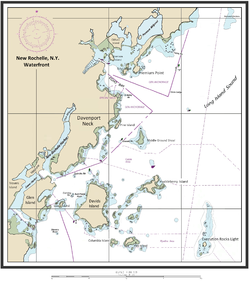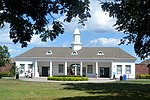Bolton Priory (Pelham Manor, New York)

Bolton Priory is a historic home built in 1838 for the Reverend Robert Bolton and his family, in the Village of Pelham Manor in Westchester County, New York. The home stands upon a wooded tract of land overlooking Pelham Bay; the once large estate surrounding it has now diminished to 3.7 acres. Influenced by the Romantic Movement in England, Bolton chose to design the house in the Romantic idiom. The building was designed to appear as if it had been constructed over a period of time; stone was used in one section and brick in another, to give the impression of various additions.Bolton Priory serves as a good reflection of both the lifestyle and tastes of a cultivated, influential family in mid-19th century rural Pelham as well as a great example of the romantic theories of architectural design emerging in America at that time. The Priory was illustrated in the first edition of Andrew Jackson Downing's influential Theory and Practice of Landscape Gardening published in 1841, in which he described it as a "highly unique residence in the old English style".The home was added to the National Register of Historic Places in 1974.
Excerpt from the Wikipedia article Bolton Priory (Pelham Manor, New York) (License: CC BY-SA 3.0, Authors, Images).Bolton Priory (Pelham Manor, New York)
Priory Lane,
Geographical coordinates (GPS) Address Nearby Places Show on map
Geographical coordinates (GPS)
| Latitude | Longitude |
|---|---|
| N 40.886111111111 ° | E -73.794166666667 ° |
Address
Priory Lane 7
10803
New York, United States
Open on Google Maps






